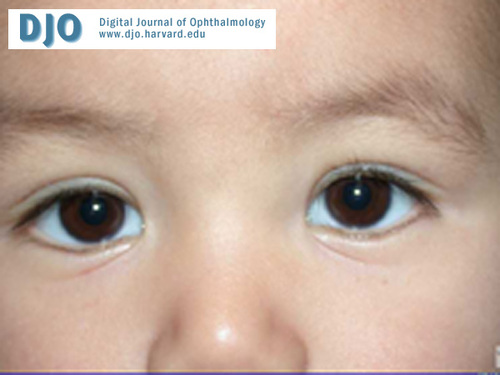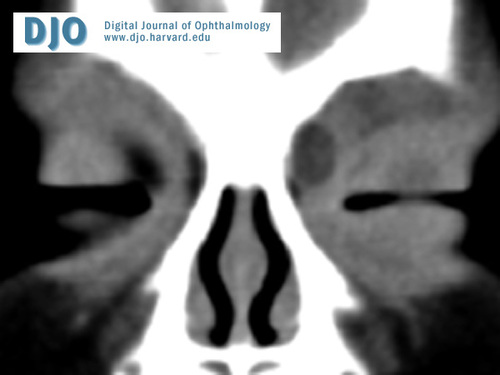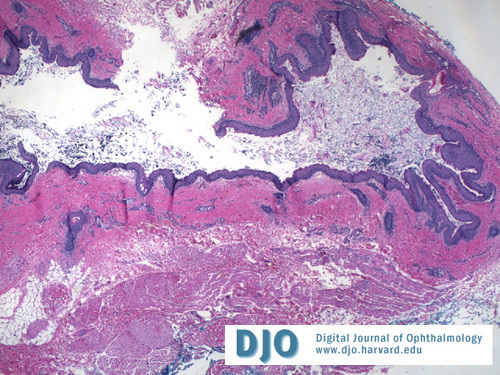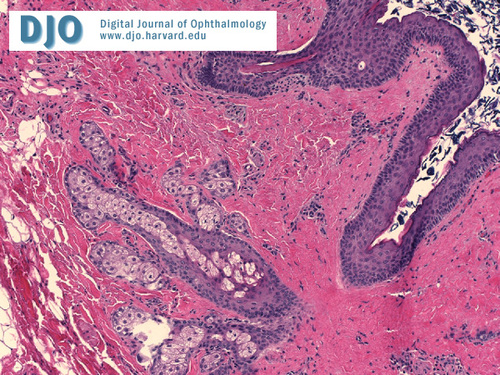Orbit/Oculoplastics Quiz 18: 14 month old with an orbital mass

Color Photo

CT - axial

CT - coronal

Pathology 1

Pathology 2
Answer: Orbital dermoid cysts are the most common mass lesions found in the pediatric orbit, accounting for 46% of all orbital lesions and 89% of cystic lesions. Dermoids usually present in the first decade of life, though deeper dermoids may not become apparent until adulthood. They are frequently located near suture lines between bones, and are most commonly found superotemporally along the zygomaticofrontal suture. Palpation reveals a firm mass which is fixed to the underlying bone. Rupture of the cyst can cause an intense inflammatory response.
2. What is the differential diagnosis?
Answer: The differential diagnosis includes other cystic lesions such as simple epithelial cysts, encephalocele, mucocele, teratoma, inflammatory cysts (echinococcal, cysticercosis), and tumors with cystic components (adenoid cystic carcinoma, rhabdomyosarcoma, lymphangioma).
3. What are the histological features of this condition?
Answer: Dermoid cysts are typically encapsulated. They are lined with keratinized stratified squamous epithelium and are filled with keratin. The presence of dermal structures such as hair, sebaceous glands, and sweat glands in the cyst wall differentiates dermoids from simple epithelial cysts.
4. Describe the management of this condition?
Answer: Standard treatment involves complete surgical excision. Preoperative evaluation includes imaging with computed tompgraphy to assess for the extent of the cyst. Some cysts are dumbbell shaped with both an extraorbital and an intraorbital component. Rarely dermoid cysts can have intracranial extension.
The surgical approach depends on the location of the cyst. Care is taken to avoid cyst rupture intraoperatively. Incomplete excision can result in recurrence. Extremely large dermoids may require aspiration prior to excision.
Sources
Shields JA, Shields CL. Orbital cysts of childhood--classification, clinical features, and management. Surv Ophthalmol. 2004 May-Jun;49(3):281-99.
Pryor SG, Lewis JE, Weaver AL, Orvidas LJ. Pediatric dermoid cysts of the head and neck. Otolaryngol Head Neck Surg. 2005 Jun;132(6):938-42.